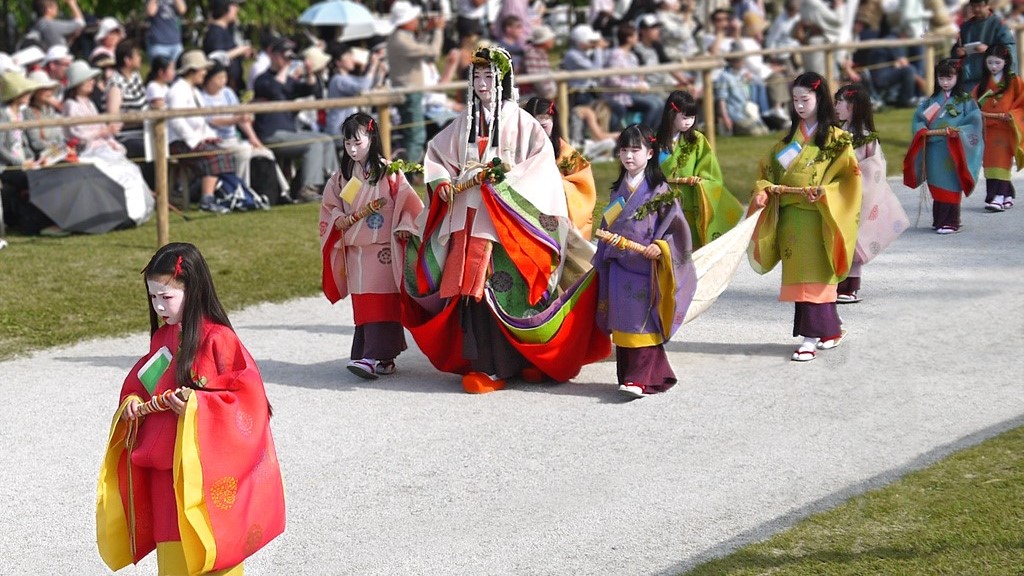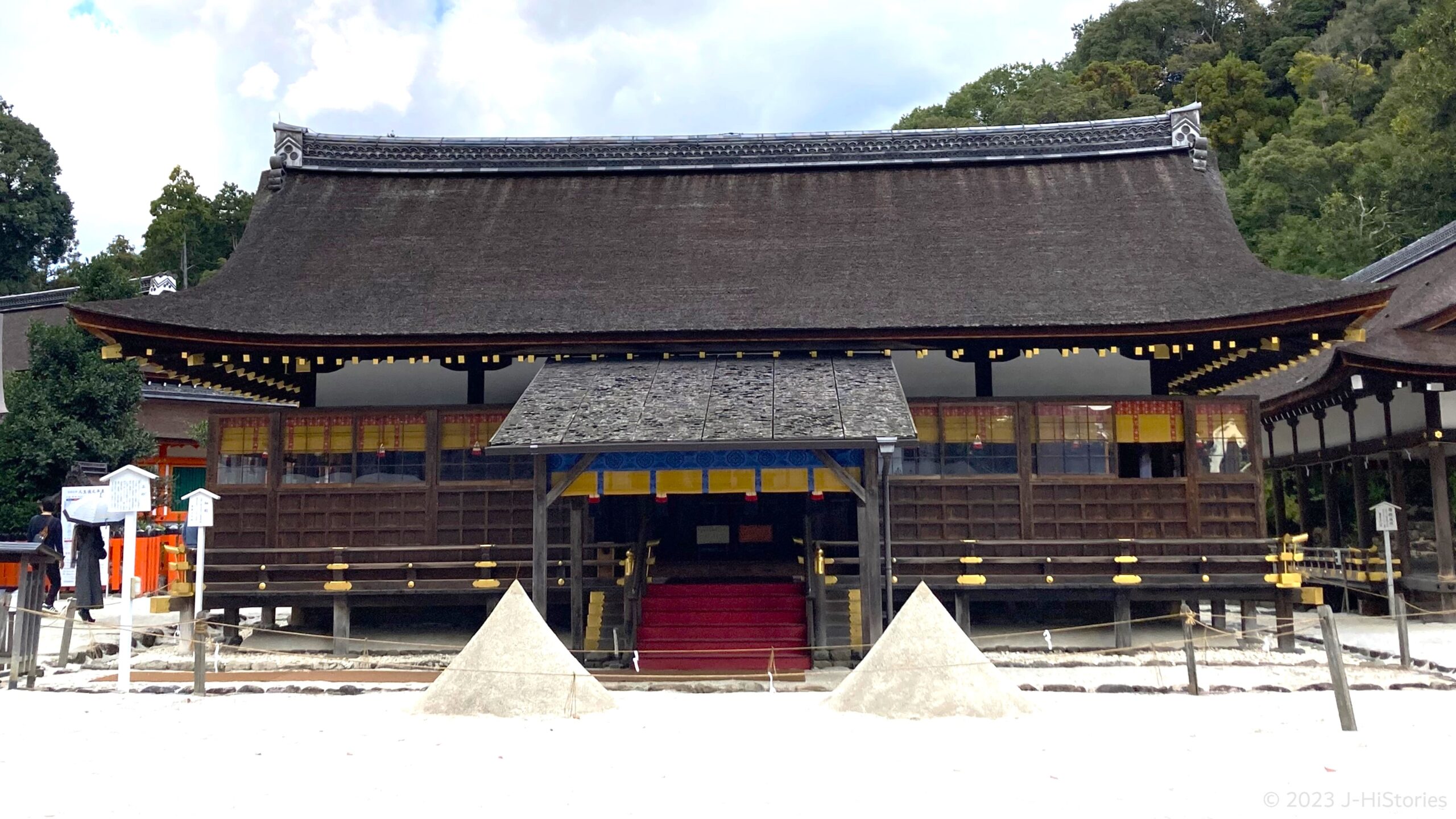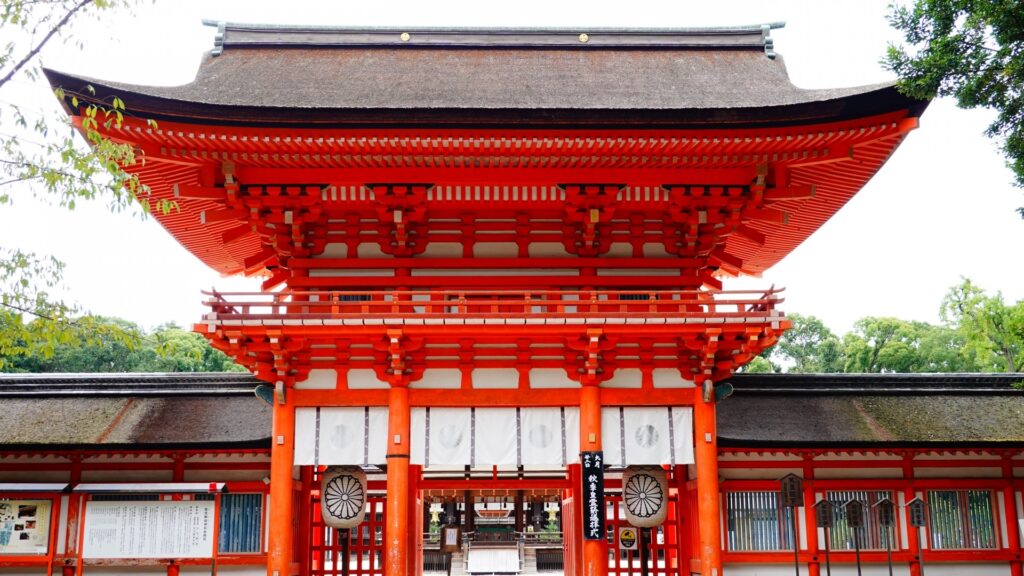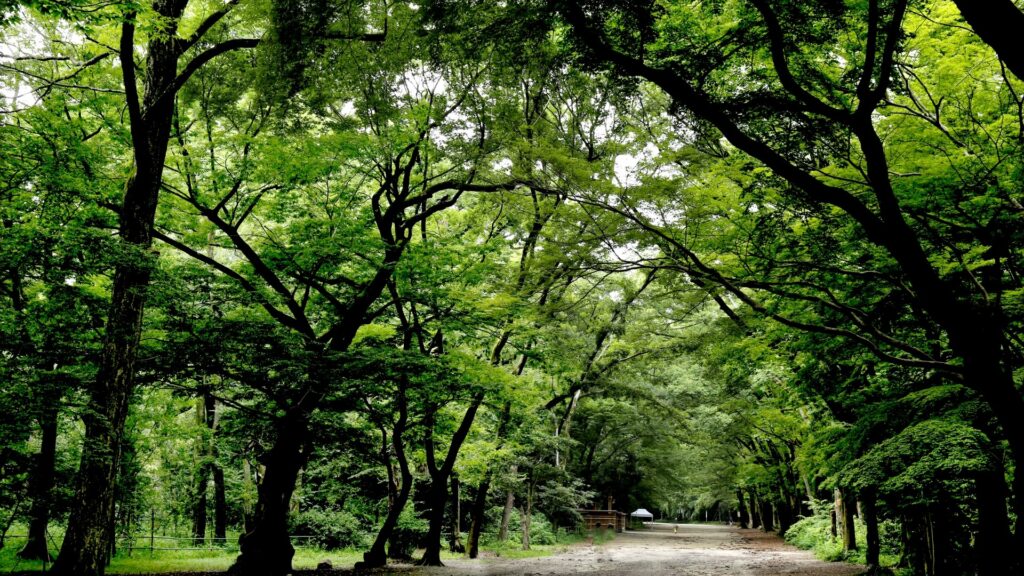Aoi Matsuri Festival, the heart of Kyoto’s graceful festival at two Kamo Shrines
Aoi Matsuri is one of Kyoto's three most famous festivals (Aoi, Gion, and Jidai), held at Kamigamo and Shimogamo Shrines. It is also one of the three major Chokusai festivals (Aoi, Iwashimizu, and Kasugasai) where an imperial envoy delivers an invocation on behalf of the emperor for the safety of the nation and its people. The main attraction is a large parade held on May 15, starting from the Kyoto Imperial Palace and ending at two Shinto Shrines, Shimogamo (下鴨神社, the official name is Kamo-Mioya Shine), and then, Kamigamo Shrine (上賀茂神社, the official name is Kamo-Wake-Ikazuchi Shine) with more than 500 people authentically dressed in the style of the Heian period (794~1192). The "hollyhock laurel" decoration, which consists of a hollyhock wrapped around a branch of a laurel tree, can be found throughout various locations, including the "Misu" (bamboo blinds) in the main hall, as well as on imperial envoys, attendants, and even oxen and horses. It is believed that the hollyhock, or "Aoi" in Japanese, has the power to protect against lightning and other malevolent spirits.



The origin goes back to the sixth century
The two shrines are the highest-ranking Shinto shrines in the Yamashiro region of northern urban Kyoto, and the imperial messengers attend the festival after going directly from the Kyoto Imperial Palace to the shrines. The festival’s origin is shrouded in several theories, one of which is described in a local report about Yamashiro compiled by the imperial order during the Nara period (710~794)). It states that:
In the 6th century, a succession of disastrous rains with high winds ruined the grain crops, and epidemics spread through the country. Diviners attributed the cause to divine punishment by the Kamo deities, the 29th Emperor Kinmei (509~571, 欽明天皇) sent his messenger with a retinue to the shrine to perform various acts to appease the deities and pray for a bountiful harvest. This annual ritual continued thereafter.
The deities of Kamigamo and Shimogamo are highly revered as guardians of the imperial palace along the diety of Matsunoo Taisha Shrine.
Miare and Mikage Pre-Festivals to welcome the deities to Shrines
One of the important pre-festivals is the Miare Matsuri festival of Kamigamo shrine and the Mikage Matsuri held on May 12th, three days before the Aoi Matsuri festival. This festival welcomes a fresh deity to this world. The sacred deity descends to upon the mountain and dwells at its base to some green trees. Shinto priests then carry the trees with the deity to a river, where the deity leaves the tree and joins the river's water. This is believed to regenerate the deity’s old divine spirit with the fresh one, thus making its Miare or appearance in this world. The Miare festival has maintained the traditional style and procedures for over 2000 years, despite some transitions that have occurred. It is a secret Shinto ritual held at night. On the other hand, the Mikage festival at Shimogamo shrine is held in the morning to welcome a fresh deity at the foot of Mt. Hiei. The procession of a sacred horse carrying the deity can be seen.
Worshipping “KAMI” (deity) brings a bountiful harvest and peace

In Japanese, the Shinto deity is referred to as “KAMI(神)”. The character 神 is composed of two parts, ネ, and 申. Originally, 申 meant “lightning”, a natural phenomenon that ancient people feared. Or the lightning was thought to be a manifestation of divine will. However, not only the lighting but also other natural phenomena such as the sun, moon, wind, and clouds were believed to be “KAMI” and possessed supernatural power. The Kamo clan has worshipped their “KAMI”, "Kamo-Wake-Ikazuchi”, or Kamo’s thunder, to drive out evil spirits, ward off pestilence and disease, suppress drought, and ensure a bountiful harvest and peace.
Lush green and abundant rivers bring vital energy
The Tadasu no Mori forest stretching from the confluence to Shimogamo Shrine boasts a lush green landscape and abundant water sources, creating a peaceful and serene environment. Visitors can experience the forest's spirit and “Ki”, or vital energy, from the trees and flowing water by inhaling deeply. We invite you to explore both the Kamigamo and Shimogamo Shrines as well as the Tadasu no Mori forest while focusing on the background of traditional Shinto festivals and ceremonies. The vibrant Aoi Matsuri Festival parade is particularly captivating and not to be missed.

Recommendations to visit
Kamigamo Shrine
- Access: 1 hour from Kyoto Station. Take bus #4 bound for "Nishigamo Shako-mae (西加茂車庫前)” at A2. Got off at "Kamigamo Jinja-mae (上賀茂神社前)" bus stop.
Shimogamo Shrine
- Access: 1 hour from Kyoto Station. Take bus #4 bound for "Nishigamo Shako-mae (西加茂車庫前)” at A2 or bus #205 bound for "Kujo Shako-mae (九条車庫前)" at C1. Got off "Shimogamo Jinjya-mae (下鴨神社前)" bus stop.


